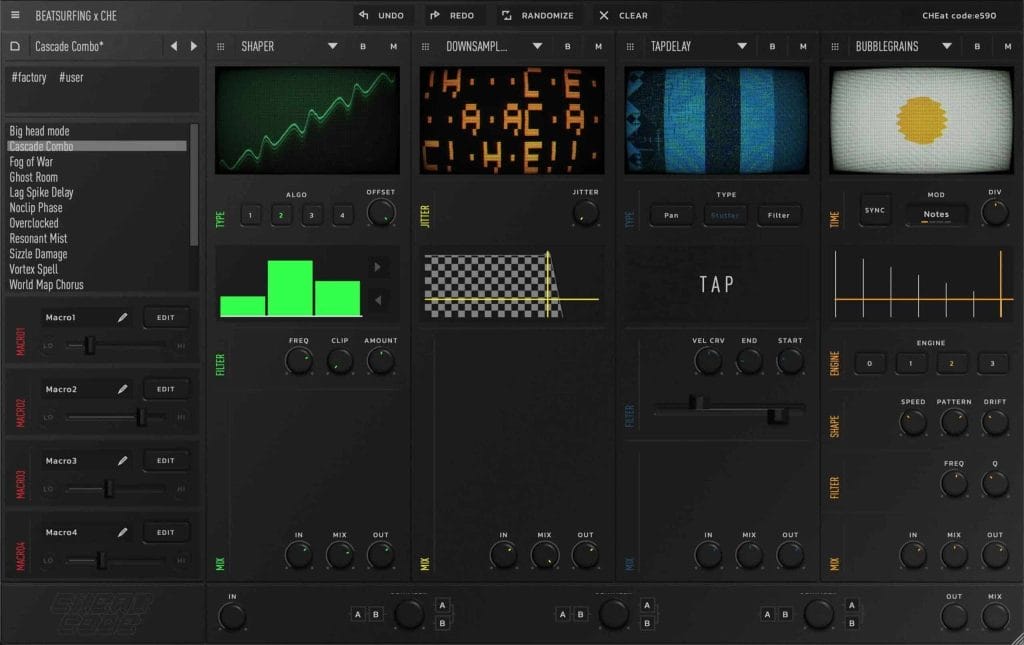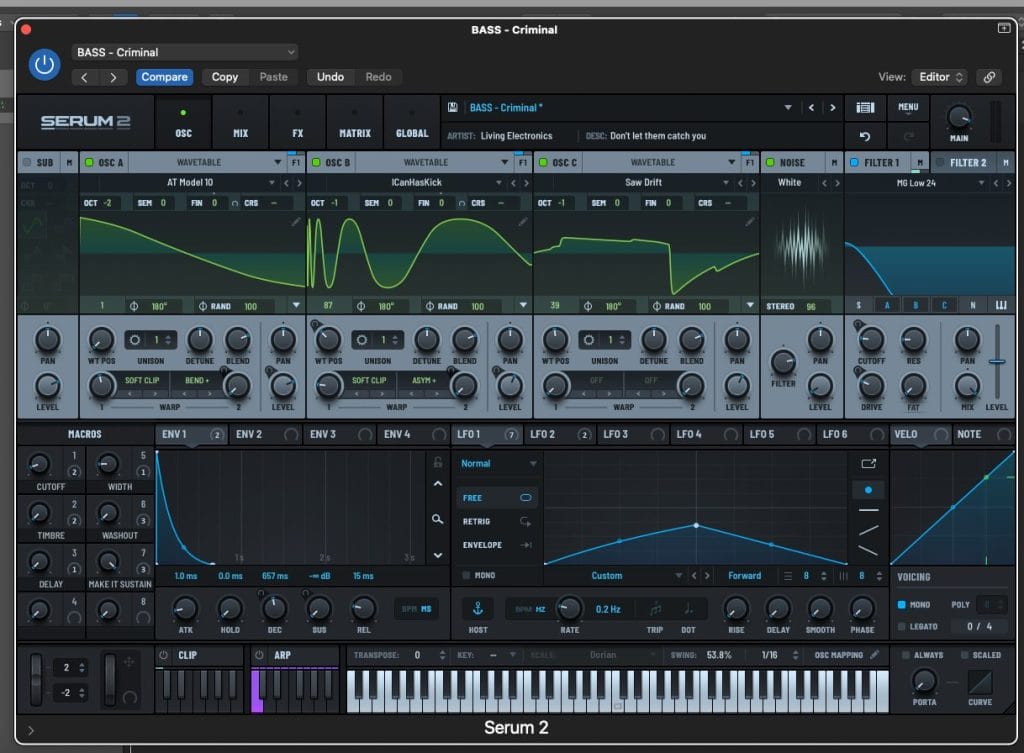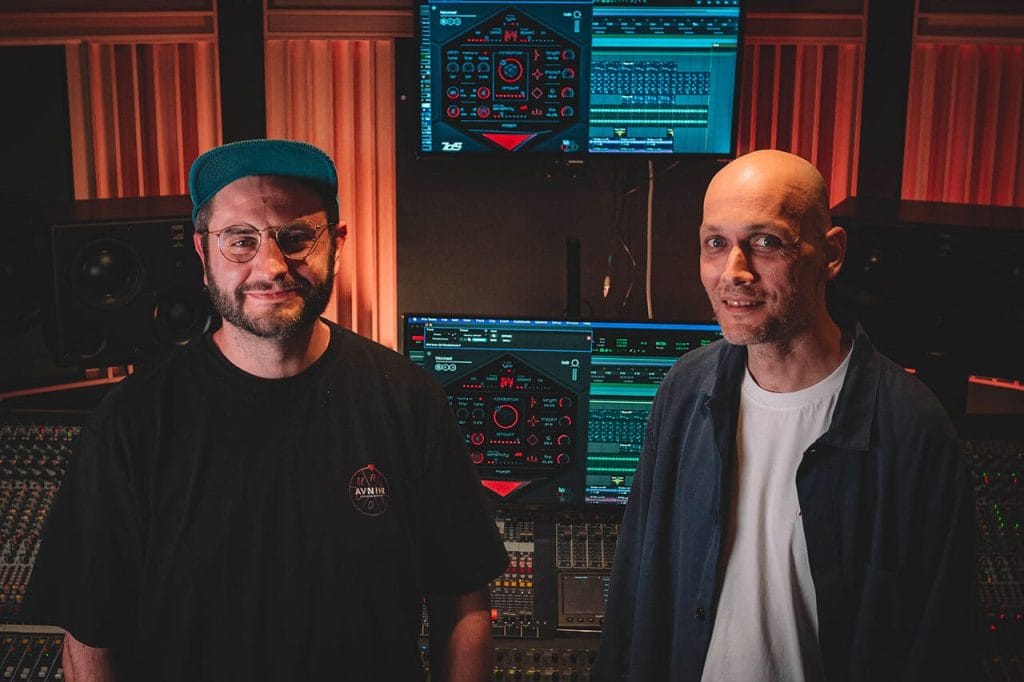We’ve heard a ton of plugin origin stories in our time, but this one may take the cake.
A few months back, the BEATSURFING team launched CHEat code in collaboration with Grammy-winning producer Che Pope. They described it as an unfair advantage: an effects plugin with 15 unique modules that can instantly inspire creativity within your workflow.
With creative routing possibilities, inspiring sound design features, and an easy-to-use package, it’s unlike any other effect plugin out there, and needs to be used to be believed. But, that got us thinking: what kind of creativity goes into making a plugin like this? Plus, how did these two entities meet and set this idea in motion?
We had the chance to sit down with CEO Pascal Demez and CCO Jean Uenten (also founding members of Herrmutt Lobby) to learn more. As it turns out, a ton went into the creation of this plugin; including lots of influence from turntables and guitar pedals, a companion app, a randomizer, hybrid crossfading, and much more. And, it all started with a simple SoundCloud message. Read on to learn more!
How did the collaboration between BEATSURFING and Che Pope come about? Was there a defining moment that solidified the partnership?
Jean: Funny enough, it started with a SoundCloud message back in 2014. Che was then head COO of Good Music. He messaged us (Herrmutt Lobby) asking to submit some beats and we thought it was fake. We sent him a message saying maybe he was hacked or something, we couldn’t imagine someone from Ye’s label actually found a little known Belgian hiphop crew’s music, but then he hit us back! From there we stayed in touch, and over the years, especially when we started working on the business idea to release plugins, he would advise us and make intros to producers and musicians.
How did you approach designing the 15 unique effects modules? Were any modules inspired by classic gear or recent developments in synthesis?
Pascal: Not directly to classic gear, although classic gear adjacent for sure. Us being a small company, we have to strive to make unique things. We can’t expect to make a classic compressor clone or reverb. It’s just not in our DNA, so we tried to bring concepts and ideas from our past work and keep an eye to what we don’t yet have in the modules.
One thing that is inspired by classic gear, came from Che and his big collection of guitar pedals. He loves to experiment with combining them in weird ways, stacking them and running drums or other sounds through them. That was one initial spark that led us down the path of looking for a new way to route effects. We started thinking about how to go beyond the typical parallel and series routing and look for new ways to approach that. This mindset contributed to what we did with the hybrid sort of crossfading you can do in CHEat Code.
Jean: While not exactly classic gear, for us a turntable, record and a mixer are very classic and embedded in our history. Coming from turntablism, modules like the slicer are inspired by turntablist or scratching techniques, pitching the sound up and down with your hand on a record. The reverser is even like beat juggling, with the backward and forward movement. There is a bunch around turntablism that our tools are influenced by.
What challenges did you face while integrating both intuitive performance features and intense sound design capabilities into a single plugin?
Pascal: At first we thought that the serial to parallel hybrid mixing was enough to take advantage of many classic effects and make them feel fresh. In the end, we worked a very long time on each effect, until we found an original take on each. So really thinking, “What would I like to do with that effect, that I can’t find a tool to do it with?”
In the process we made many modules, many were developed but did not pass the “is it truly unique” test. I am still working on some prototypes with Che and if we manage to refine the golden idea for each, some of them could be added in an update.
The macro system seems designed for live tweaks – can you give an example of how you personally use macros in a session?
Jean: Usually when you make automations, you end up moving lots of parameters at the same time. In CHEat Code each assigned setting can have a unique min and max and how you tweak that can really add subtlety and nuance into your sound. The macros are great for tweaking them live or using them to kind of “play” your automation.
Pascal: There is a companion app in beta now that allows you to control the macros and the Widgets with the touchscreen. But even without a touchscreen controller, you can assign a macro to simply change the grooves from the shuffler and also change the pitch of the slicer. Your sound is now evolving when using the macro, it’s “performed” when you use it. This is a core idea in lots of our tools. Being able to play, instead of trigger, many sounds with minimal controls.

Out of all of the possible combinations of modules, what’s your favorite that you’ve discovered so far and why?
Pascal: I don’t want a slight auto pan and basic reverb. I want to melt and reconstruct my sound. Take it to another place and see what I can find. I want to nuke it sometimes. I find new favorites all the time just using the random button to explore until I get in the ballpark of something that I find intriguing.
Jean: My favorite is a combo of reverser, shuffler and slicer. These are great for exploration. They can really bastardize your signal and create an unknown thing. By randomizing the parameters from the 3 of them, you can get some crazy gold. Especially on melodies, arpeggiated sounds or samples.
Lastly, what advice would you give to aspiring producers who want to get the most out of CHEat Code?
Jean: I don’t open it thinking I want to make this specific thing. I am in a contemplative mood, don’t expect anything, and I am open to surprises. For quick experimentation, randomizing and using the widgets are great. Sweep through and see if anything jumps out at you.
Pascal: Experiment with stacking and the routing between series and parallel. Don’t hesitate to throw something into it and end up with a completely new sound. It’s all about exploring.
Buy CHEat code here.
The post How A Chance Meeting with A Legendary Hip-Hop Producer Led to A Wildly Creative Effects Plugin: A Conversation with the BEATSURFING Team appeared first on Magnetic Magazine.






